"The contemporary illustrator is an artist when he solves the problem of his client. The fine artist is an artist when he solves the creative problem he has set for himself. As a contemporary illustrator, my own primary objective is to satisfy the client."
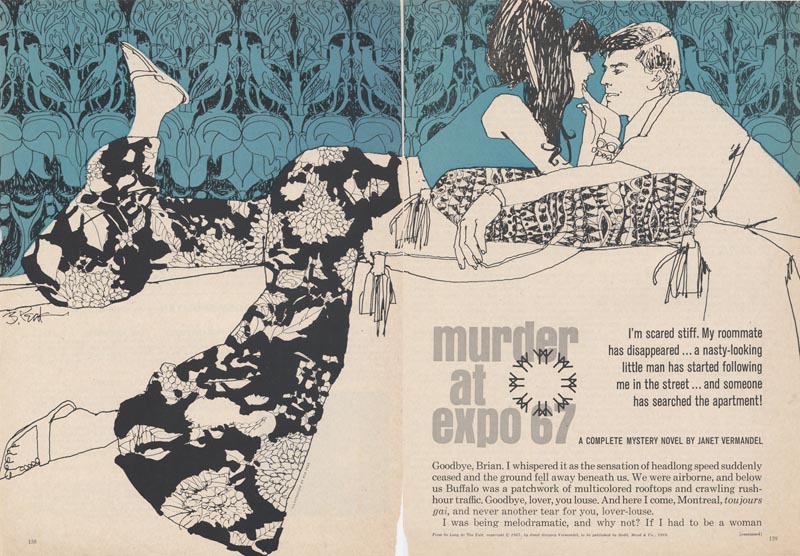
Then, with a keen understanding of circumstance that could as easily be directed at today's picture makers, Peak writes the following:
"... the accelerated growth of technology causes rapid change... in this age few man-made things last. Airplanes, cars, and clothes change style rapidly. The chrome strip on a car has nothing to do with function other than the function of stimulating sales. Similarly, the woman's magazine changes format when its sales drop or its market changes. This is a phenomenon in which the contemporary illustrator is involved. Solving the problems of rapid obsolescence breeds a unique kind of artist whose premise must be: when you turn the page it's all over."

"Our function is to solve the problems of a temporary, of-the-moment product - the result being a temporary, of-the-moment product! To compete professionally as an illustrator will require all you have to offer and then some. That is what makes commercial art an exciting, vital occupation."
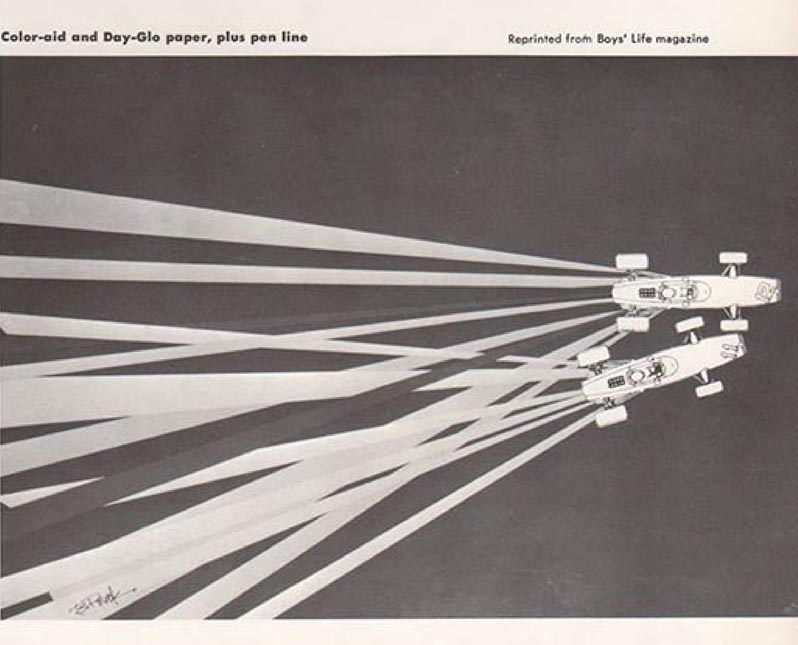
"For me the solving of the problem, the creative process, is more exciting than doing the finish. The finish, of course, is as important as the loudspeaker of a hi-fi rig. It must be good, but if the music that comes out of that speaker doesn't mean anything to the listener, who needs it?"
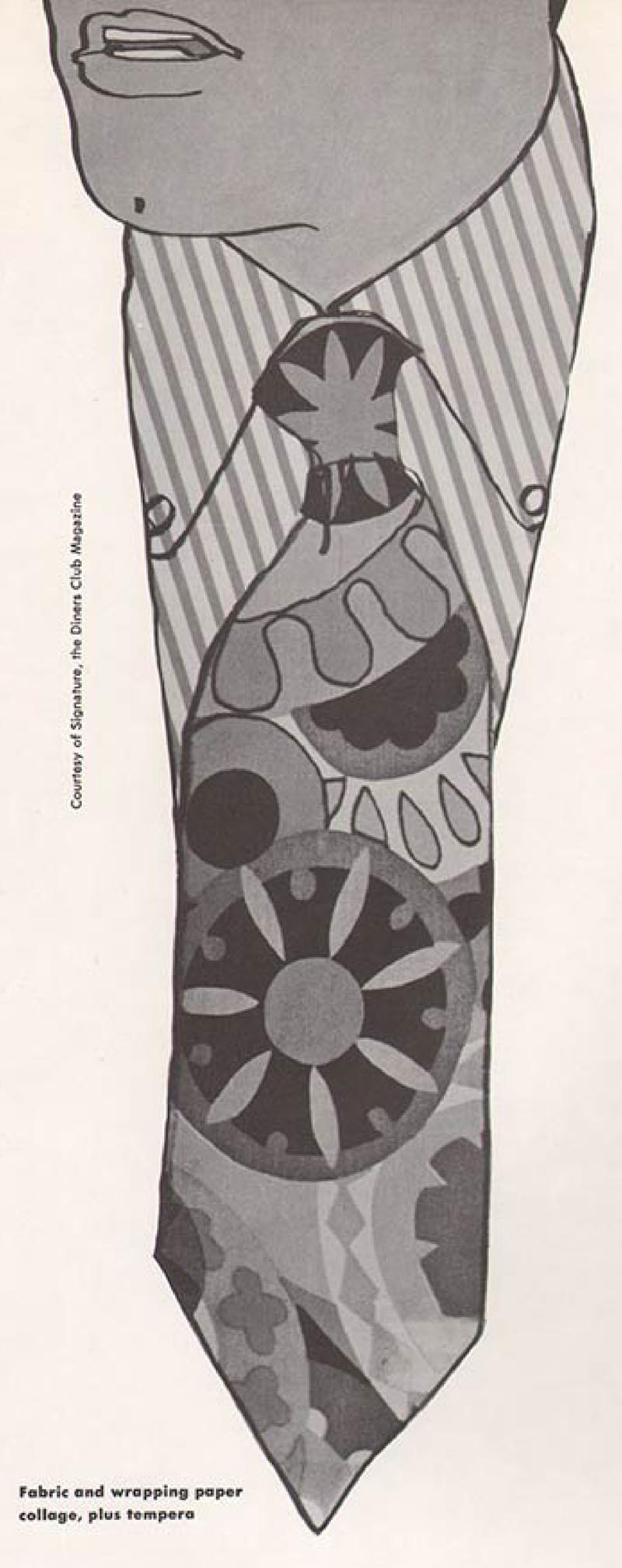
"Before I start each job these are the things I consider: (1) Have I seen it myself; what experience do I have with the subject? (2) Who is the audience? (3) What is the problem and how can I solve it? (4) What materials should I use? (5) What style is best for the job?"
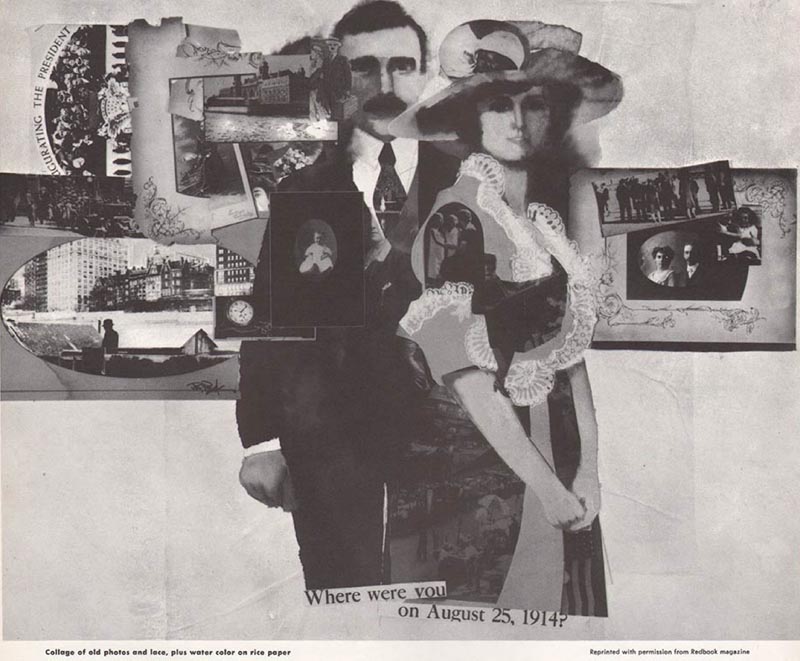
These last four black & white magazine illustrations are from later in the chapter. Peak uses them as an example of his approach to contemporary illustration:
"Here are illustrations for four stories that appeared in one issue of Cosmopolitan. The problem was to give each a different look. One story, called "predators," was set in Miami. The locale, plus the flamboyant characters, led to a flamboyant interpretation. I cut out pieces of fabric and decorative papers and made a collage depicting the main couple. I didn't use models, but called on the mental image I had formed of these two people at my first reading of the story."
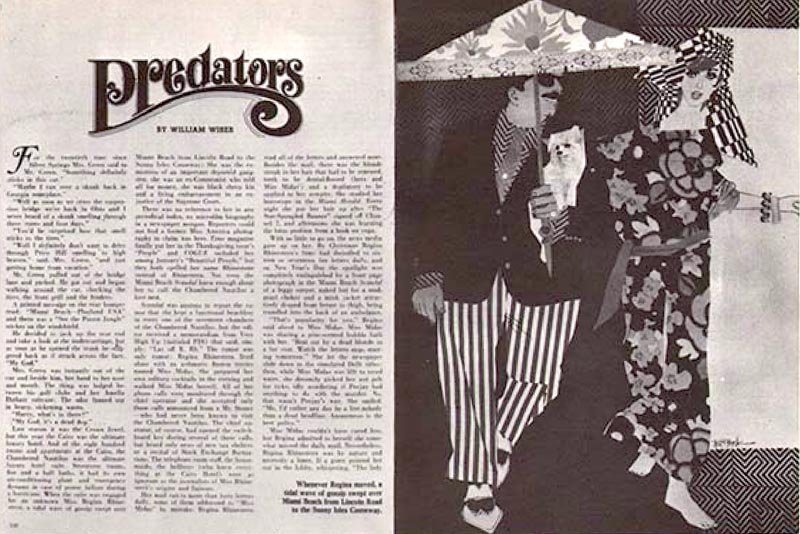
"In the love story "Green Wind" the big love scene began when the girl turned off the light. My reaction was: What remained visible? The Answer: Nothing but a silhouette - which I cut from black paper. On the following page of the story appeared the same silhouette but with the values reversed."
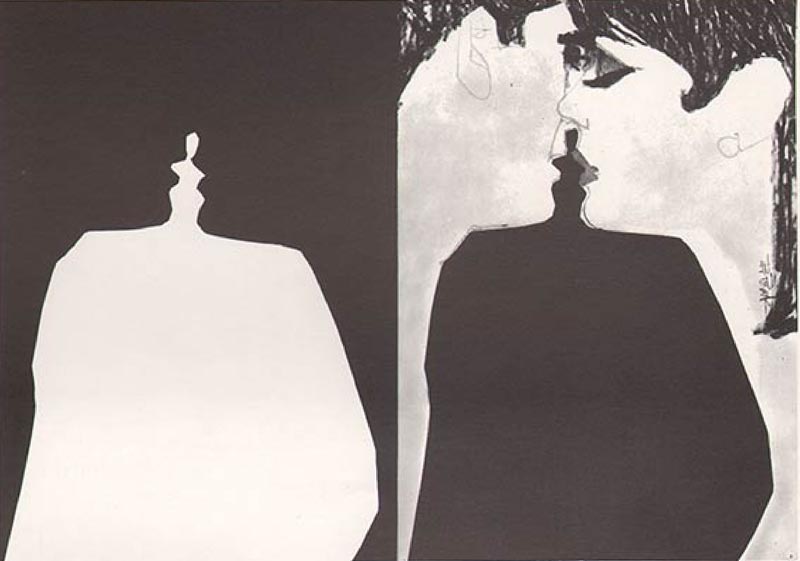
"In the illustration for "Modesty Blaise" I used drawing, silk screen, decorative papers, and photos to get the kaleidoscope look appropriate to this fast moving spy story."
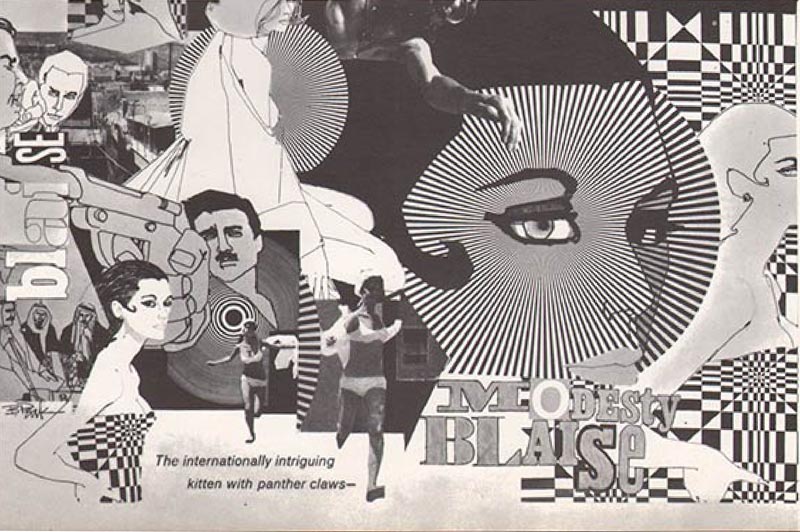
"The heroine of "Subject of change," another love story, is sophisticated and fashion-wise. I showed her, below, in a high-fashion robe. For style I went where many fashion designers were going - to the Art Nouveau of the early 1900's."
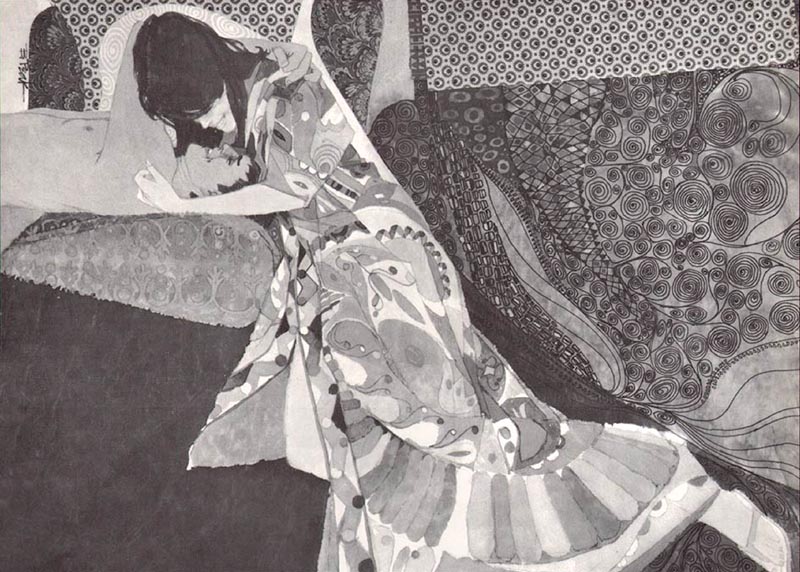
I'll return to Peak's intro to his FAC chapter for a concluding thought from the artist. There Peak writes:
"If youth represents the growing force in this country, then the contemporary illustrator should reflect that condition... and take the lead. just as the speaker must know his audience before he writes his speech, the illustrator must know his public before he makes his picture."

"Modern communication has accelerated the changes in fashion. What used to last five years is good for only three nowadays. The outward appearance of art is, in itself, an aspect of fashion, so the involvement of the artist in the contemporary scene, the immediate moment, is obvious. This is what I mean when I define art as an act of doing."
* Special thanks to David Apatoff for providing the two scans at the top of today's post and to Matt Dicke for the scans from Bob Peak's chapter of the Famous Artists Course.
* My Bob Peak Flickr set.
* Bob Peak official website
* Bob Peak official blog
* the Sanguin Fine Art Gallery






0 comments:
Post a Comment